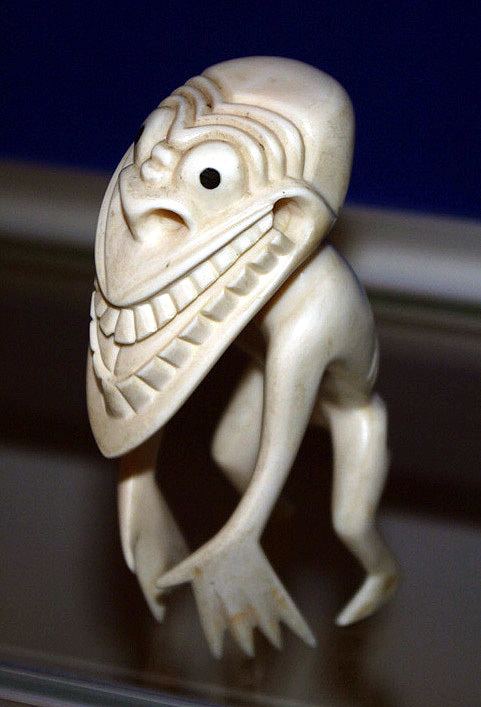 | ||
Tupilaq pilaque
In Greenlandic Inuit (Kalaallit) traditions, a tupilaq (tupilak, tupilait, or ᑐᐱᓚᒃ) was an avenging monster fabricated by a practitioner of witchcraft or shamanism by using various objects such as animal parts (bone, skin, hair, sinew, etc.) and even parts taken from the corpses of children. The creature was given life by ritualistic chants. It was then placed into the sea to seek and destroy a specific enemy.
Contents
- Tupilaq pilaque
- Tupilaq farg
- Publicity versus secrecy
- Concealment
- Neutralizing effect of public confession
- Meanings of the same term in various Inuit cultures
- References
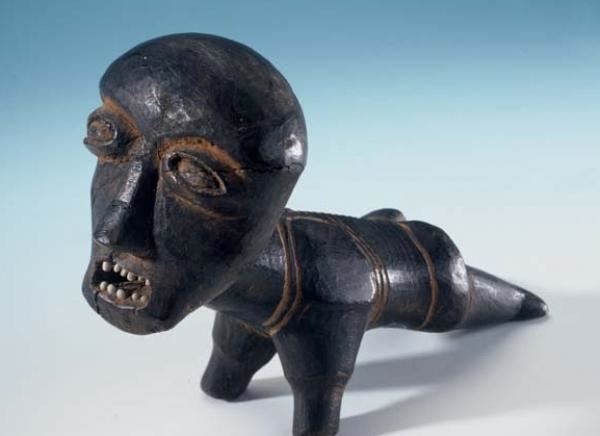
The use of a tupilaq was risky, however, because if it was sent to destroy someone who had greater magical powers than the one who had formed it, it could be sent back to kill its maker instead, although the maker of tupilaq could escape by public confession of her or his own deed.
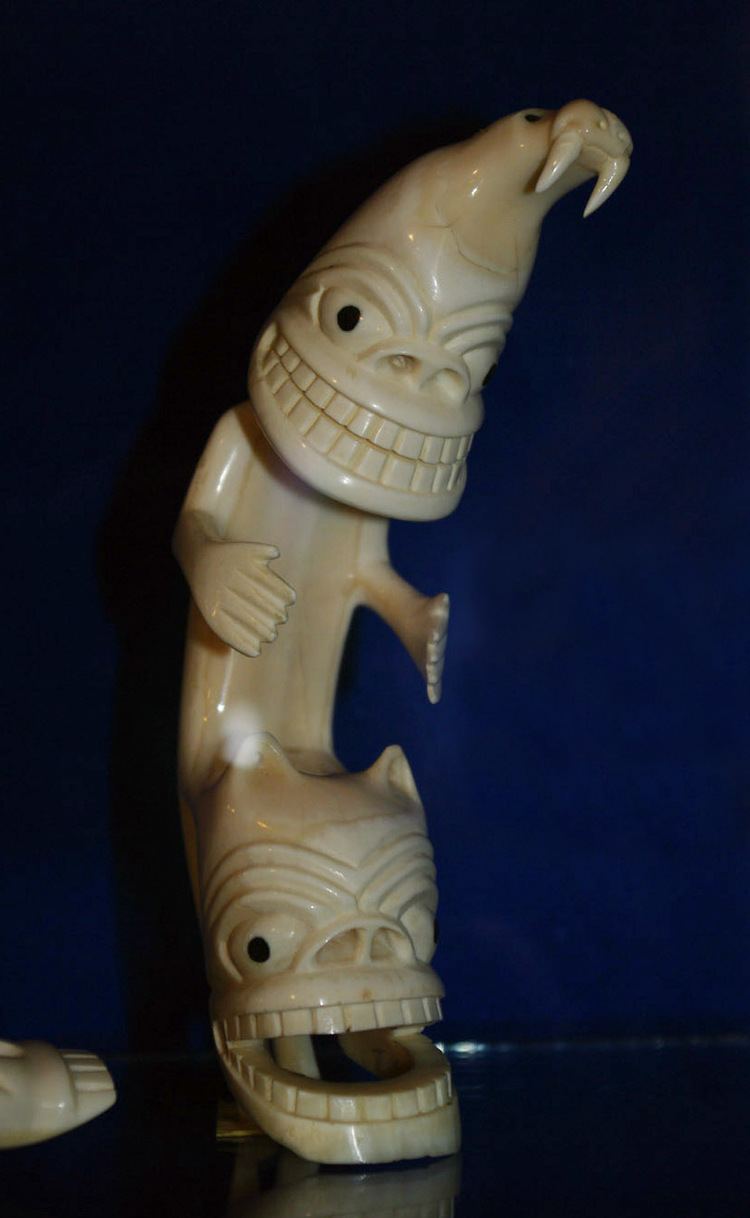
Because tupilaqs were made in secret, in isolated places and from perishable materials, none have been preserved. Early European visitors to Greenland, fascinated by the native legend, were eager to see what tupilaqs looked like so the Inuit began to carve representations of them out of sperm whale teeth.
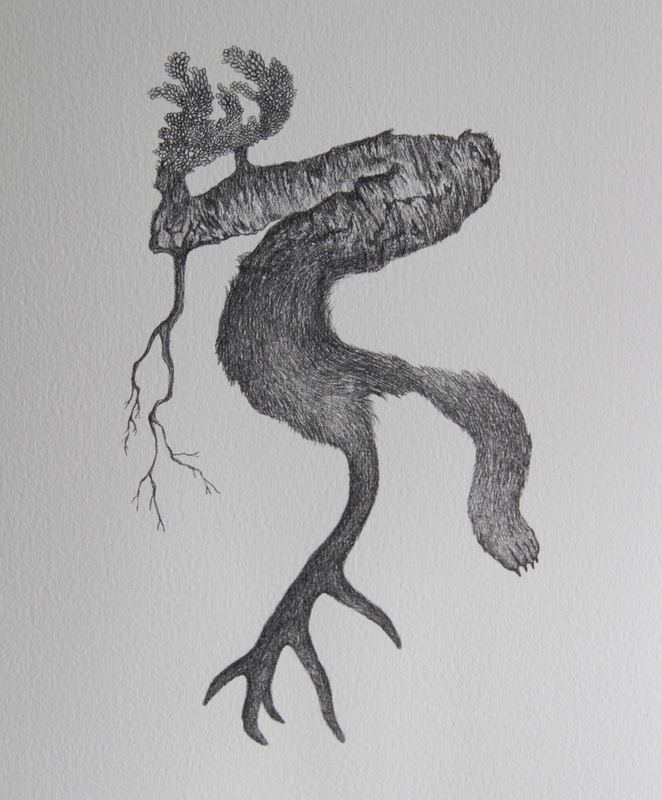
Today, tupilaqs of many different shapes and sizes are carved from various materials such as narwhal and walrus tusk, wood and caribou antler. They are an important part of Greenlandic Inuit art and are highly prized as collectibles.
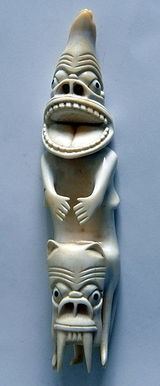
Tupilaq farg
Publicity versus secrecy

The making of a tupilaq started most often at night, in secrecy. The shaman (angakok) would don the anorak backwards, with the hood over his face, and engage in sexual contact with the bones used to make a tupilaq, singing and chanting during the entire process, which could take several days. The making a tupilaq was risky to its own maker if the attacked person made it rebound: in this case, public confession was the only rescue. The magic consequences of situations of concealment, and the neutralizing effect of public confession was believed also in several other areas of life, thus, this is an example of the more general topic of secrecy versus publicity.
Concealment
Concealment or secrecy could raise magic consequences in several areas of life:
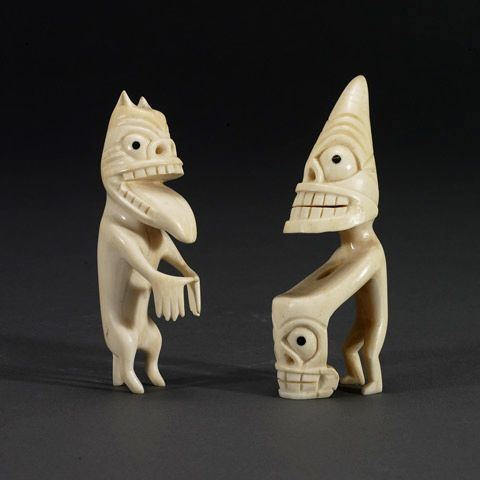
Neutralizing effect of public confession

Thus, concealment was a preliminary for several magical effects. If this was broken, unintentionally or intentionally, the effect could lose its power.
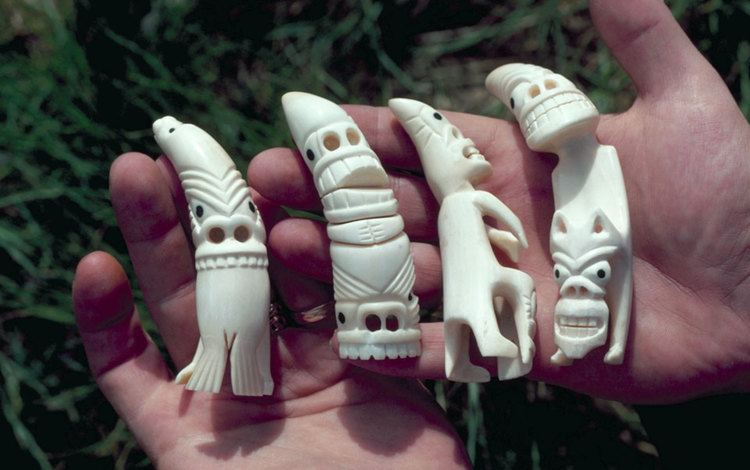
Meanings of the same term in various Inuit cultures
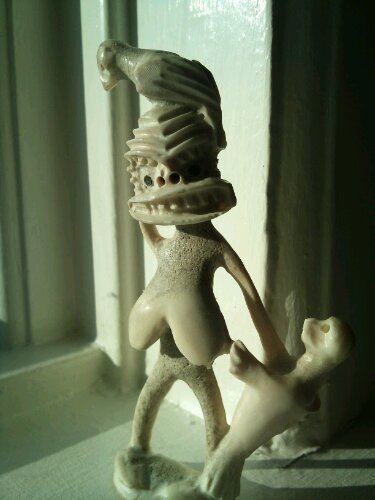
Inuit cultures were far from being alike, although there were some similarities. The tupilaq concept had variants. It might be a man-made object, a ghost-like being or a haunting soul. In some cultures it was exactly the shaman who had to deal with it.
Such distant groups like the Caribou Inuit, Greenlandic Inuit, Iglulingmiut Inuit and Copper Inuit knew the concept of tupilaq, but the details differed:
